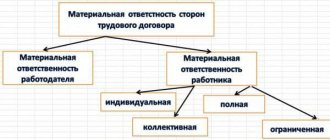Job description of a customer service manager: general provisions
1. The manager providing customer service holds a leadership position.
2. A person with:
- complete higher or secondary education in the Faculty of Economics;
- additional training base in the relevant field;
- Minimum work experience in the entrepreneurial field of 3 years.
3. The customer service manager’s awareness includes the following categories of knowledge:
3. 1. Code of laws proclaiming issues related to the implementation of the sphere of entrepreneurship.
3. 2. Market economics, commercial activities, basics of doing business.
3. 3. Market research fundamentals:
- concepts;
- control;
- methods;
- directions.
3. 4. Theoretical component of management, macro- and micro-areas of the economy.
3. 5. Products offered to customers:
- assortment;
- classification;
- options;
- appointment.
3. 6. Rules for achieving business connections.
3. 7. Rules of etiquette in case of client negotiations.
3. 8. Theoretical knowledge about communication between people.
3. 9. Basic awareness of the fields of sociology and psychology.
3. 10. The Client Service Manager is appointed and dismissed by means of a governing order.
3. 11. The employee’s subordination extends to the commercial director of the organization.
3. 12. In the event of a manager’s absence for an indefinite period of time, his duties are transferred to a person whose appointment is made in the manner established by the enterprise. This person bears the functions of the manager, as well as responsibility for ignoring them.
Document Writing Basics
The current legislation does not provide guidelines for drawing up a job description, which opens up great scope for employers to adapt the document to their needs. But in practice, many companies prefer to rework standard instructions for themselves rather than create new ones from scratch. The standard instructions include the following parts:
- A common part.
- Functions.
- Rights.
- Responsibility.
To these sections, which describe the main parameters of a specialist’s activity, employers, especially large ones, can add several additional parts. They may stipulate working conditions, job relationships, or criteria that are used to assess the quality of the results achieved by the employee.
General section
The basic part, which stipulates the main aspects of the employee’s activities: to whom he reports, who hires him and other points. A special role here is played by the list of knowledge and skills required from an employee, which can vary greatly in different companies.
Important! The skills in this part must be consistent with the job functions identified in the next section. So, if an employee’s duties include communicating with foreign clients, then it is logical to include knowledge of the relevant foreign language in the skills.
Functions
This part is reserved for listing the employee’s work responsibilities. This list can be very diverse and greatly depends on the employer’s policy, as well as its size, industry and other factors.
Important! For account managers, standard instructions can be used if they perform interchangeable work. If each manager is responsible for a specific area of work - large clients or individuals from a certain region - then it is better to draw up a document reflecting their individual differences.
Responsibility
This part provides a small list of grounds for holding an employee accountable. In practice, serious liability is determined through labor and legal proceedings, making it unnecessary to include specific penalties in the section.
Rights
This part provides a list of the basic rights of a manager. The specifics of the job or the employer's policy may lead to an expansion of the list. Thus, this may include the employee’s rights to compensation for travel expenses or to payment by the employer for mobile communications.
After the text of the document has been drawn up, it must be agreed upon with relevant specialists - a lawyer, an employee of the personnel department - and the employee’s immediate supervisor. Only after this the document is sent to the head of the company. Next, the document is printed in compliance with all official attributes: date, transcript of signatures, etc. The job description comes into force after signatures by all parties: the director of the company, manager and other employees who participated in the process of its approval.
Responsibilities of a Customer Service Manager
The functionality of the employee in the position in question is:
1. Conducting analytical research of the client base, which can become potentially significant for the enterprise. The client's need, its level and focus are also identified.
2. Developing a search client methodology, planning joint work activities, schematically drawing up application forms.
3. Searching for clients using available methods:
- advertising;
- presentations;
- communications.
4. Organizing and conducting negotiations with clients who have expressed interest in the services offered.
5. Implementation of personal meetings with clients, during which methods of persuasion of the profitability of transactions are used. It is advisable to smooth out conflict situations and further conclude agreements.
6. Maintaining ongoing contacts with existing clients, as well as organizing the work process according to agreed plans.
7. Compliance with client interests in the process of fulfilling the terms of the contract by the branches of the enterprise.
8. Formation of a client base, accompanied by relevant changes.
9. Development of schematic options for building relationships with clients that represent great benefits and development prospects for the enterprise, which are contained in the offer:
- special conditions;
- discounts;
- minimum fast deadlines.
10. Development and provision of recommendations and advisory advice to clients regarding the highly effective use of existing business cooperation.
11. Establishing feedback with clients, identifying factors that provoke client dissatisfaction with cooperation, and an analytical look at incoming complaints.
General provisions
1.1. The Customer Service Manager is classified as a manager and reports directly to the head of [name of organization].
1.2. The customer service manager is appointed to the position and dismissed from it by order of [position name].
1.3. A person with a higher professional education (in the specialty “Management”) or higher professional education and additional training in the field of theory and practice of management and work experience in the specialty of at least [value] years is accepted for the position of customer service manager.
1.4. During the absence of the account manager, his duties are performed by [position].
1.5. A customer service manager must know:
— legislative and regulatory legal acts regulating entrepreneurial and commercial activities;
— market economy, entrepreneurship and doing business;
— market conditions, pricing procedures, taxation, marketing fundamentals;
— theory of management, macro- and microeconomics, business administration, stock exchange, insurance, banking and finance;
— theory and practice of working with personnel;
— forms and methods of conducting advertising campaigns;
— the procedure for developing business plans and commercial terms of agreements, agreements, contracts;
— fundamentals of sociology, psychology and labor motivation;
— ethics of business communication;
— basics of production technology;
— management structure of an enterprise, institution, organization, prospects for innovation and investment activities;
— methods for assessing the business qualities of employees;
— basics of office work;
— methods of information processing using modern technical means, communications and communications, computer technology;
— advanced domestic and foreign experience in the field of management;
— basics of labor legislation of the Russian Federation;
— internal labor regulations;
— rules and regulations of labor protection.
Manager rights
The legal functions of the manager are reduced to:
- Independent choice of communication and working form with clients, as well as methods of establishing connections.
- The ability to manage at your own discretion the funds allocated by the organization for various types of expenses.
- Signing documents within your own competence.
- Familiarity with documentation affecting job rights and responsibilities.
- Requesting management for documents necessary to perform direct functions.
- Request from management the conditions necessary to perform the relevant work activity.
Who is a manager
The very name “customer service manager” already contains a completely understandable definition of the responsibilities of such an employee. This is a specialist whose main responsibility is to contact customers, explain to them the essence of the products and services offered by the company with a view to their subsequent implementation.
The image of your company and its profits depend on how competent and savvy your managers are who are in direct contact with customers. It is quite obvious that this is the key figure in the structure of the company, on which it depends whether the client will be satisfied and whether he will contact you next time, and whether he will recommend you to his friends.
It is necessary to clearly define what a customer service manager does.
Creating a Positive Customer Environment
- Ensure the quality of the first interaction.
- Work out the avatar of the target audience representative.
Try to create a good impression on the client from the first meeting. Quality service is not just about dealing with customer objections. First of all, situations should not be created where these objections arise. Don't give the client the slightest reason to doubt you. It is much easier to create a system for working with consumers than to later restore your reputation and prove that you are worth attention.
Identify your company's ideal customer. It is difficult to predict the individual qualities of each person, but if you have a type of ideal buyer, it will be easier to develop algorithms for interaction. To do this, answer the following questions:
- What does your ideal customer prefer in terms of products and services?
- How important is order fulfillment time for such a buyer?
- Will your ideal client need technical support?
- What needs does your ideal customer want to satisfy with your product?
- What can you do to help the client achieve their goals?
Your task is to give the buyer more than he expects from you. Firstly, it will make a good impression and will help retain the client, and possibly convert him to regular status. Secondly, if a controversial situation ever occurs, such a consumer will be more loyal to you.
Let's say you promise to deliver pizza within an hour of ordering. Deliver it in 40 minutes.
Pay attention to your retail or office space. It should be convenient not only for you, but also for your clients. People who come to you should be well oriented, feel safe and want to come back to you again. For example, use these solutions:
- Designate parking areas for your customers.
- Provide an accessible environment for people with disabilities.
- Place signs indoors.
- At the entrance, use information desks, offer brochures, directories, and store maps.
- There will be an employee at the entrance to help customers find the right place.
Embrace customer centricity. Each person deserves an individual approach. Treat the client as a significant person, and not just as someone passing by. Use these techniques:
- Introduce yourself by name.
- Be interested in the client's name.
- Listen to the client's requirements.
- Don’t just give information about the product, but help in choosing.
To maintain a high level of service, always put yourself in the client's shoes. This will make it clear what else needs to be worked on. Take these methods into account:
- Check the voice menu. Call your office and evaluate the ease of use.
- Check your email response rate. Send an email and wait for a response.
- Check the display and labeling of products. Just walk around the store.
- Check out the chats. Write about the problem in the chat and observe the speed of resolution.
Many people like independence. They will not depend on the store’s opening hours if you equip it with cash registers for self-checkout, connect automatic services to the work, and create forums with ways to solve problems. All this will help you work with clients even more effectively.
We recommend
“Customer Relations: 10 Main Principles for Building Long-Term Relationships” Read more
Rights and obligations
A customer service specialist has the right to decide how to find and establish business partnerships with customers. He also independently manages all the funds allocated to him for work. The manager acts on behalf of his company during negotiations and signs documents to the best of his competence. He gets acquainted with the organization's decisions regarding issues that arise in the course of work.
The client manager has the right to demand from his managers those documents that he needs to perform the work.
He also has access to papers that spell out his duties and rights, and the conditions for maintaining the quality of performance of his duties.
At each enterprise, such a specialist performs certain duties. This:
- Conducting analysis and study of all possible clients, taking into account their requirements.
- Using various methods to find buyers and clients by placing advertisements, attending presentations and exhibitions.
- Assessing the reliability of future business partners and their capabilities.
- Conducting negotiations and identifying customer preferences with their help.
- Meetings with potential partners, concluding contracts and discussing their terms.
- Maintaining connections with existing clients and working with them.
- Elimination of emerging problems.
- Creation of profitable offers for the most promising clients in the form of special conditions, discounts, etc.
- Communication with business partners, identifying their requirements and complaints.
- Creating a customer base and making adjustments to it.
- Analysis of the implementation of similar work in competing companies.
The employee should not perform duties beyond the scope of the instructions. Therefore, it is important to know what is included in a manager’s job description. Read our articles about the functions of an office manager, as well as a financial manager, advertising and marketing, supply and logistics, tourism, sales development, company, personnel and retail network.





